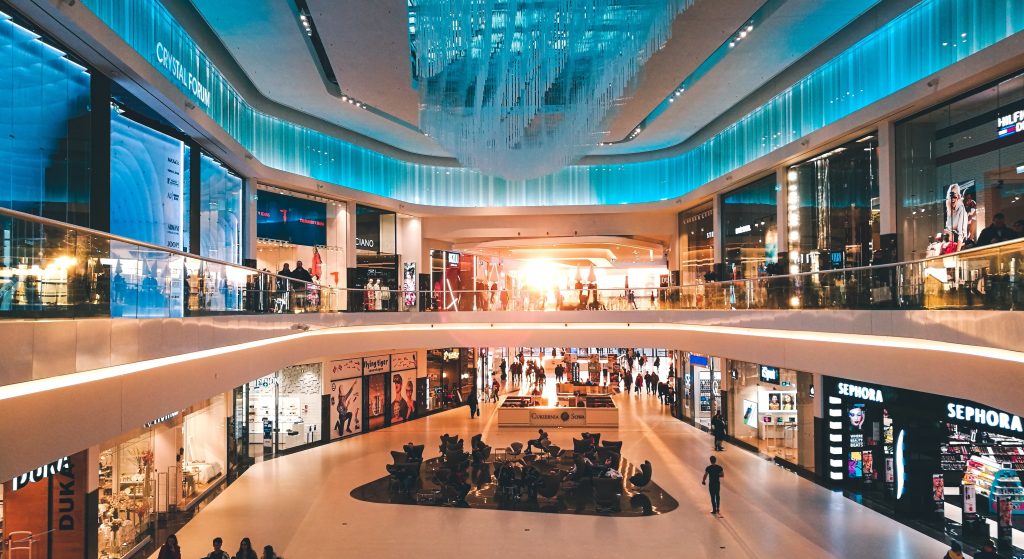How Technology is Changing the Future of Fashion

After a hectic fashion month with the most prestigious fashion brands innovating how to present their own collections, we are able to talk about fashion and technology as a whole.
Why? These two sections are completely interconnected and in this article, we explore how these innovations are transforming the fashion industry today.
From the standpoint of fashion brands, this represents a great opportunity to further engage with customers in real time and reach out to new markets.
“Meanwhile, technology is getting faster and smaller, speaking to those same consumers seeking minimalist and seamless, but well-designed options.”
– Briony Richter, Future of fashion tech: bridging the gap for innovation
Let’s look at how the future advancements and already present technology can reshape the fashion landscape.
Sustainability
New technologies are enabling the fashion industry to become more sustainable rather than an energy-exhausting fashion market.
The carbon footprint generated due to the massive use of raw materials, textile manufacturing processes, clothing construction, shipping, and then retailing is huge. However, we have noticed a shift in consumers that is forcing the industry to become more sustainable by being slower, and less fast fashion.
An example of this awareness of sustainability in the fashion industry is the company CLO Virtual Fashion which creates digital design prototypes in order to decrease the number of wearable samples and reduce the footprint on the planet.

“Commercialising a completely new generation of textiles as well as bioengineered clothing solutions that are less demanding on the environment is creating more value, while reducing the damage caused by the fashion industry and consumers.”
– DHL, Fashion Technology and Innovation Shape the Future of Fashion
In addition, we are seeing a good reaction from the biggest fashion design players in the high-street who are now designing entire new lines with sustainable fashion at their core. Examples of this include:
- H&M collection using Piñatex, a leather-like material made from pineapple leaves.
- Levi’s is using hemp in their new line of sustainable clothing to make them more easily recyclable.
- Adidas has challenged itself to produce 11 million pairs of sneakers with recycled ocean plastic in 2019.
This is definitely not enough but a necessary wake up call for other fashion retailers.
The influence of AI
Artificial Intelligence helps the fashion retail industry to predict, plan and promote clothes while improving product availability and accurate deliveries via a number of online marketplaces.
The dream of every designer and brand is forecasting what’s the next fashion trend coming to avoid overproduction. Today AI is enabling the ability to prognosticate trends and sales, allowing brands to understand consumer patterns and predict their production levels.
- Google and Project Muze are a good example of how machine learning can be applied to fashion. Through the use of complex algorithms and neurotechnology, Project Muze enables e making creative decisions on behalf of the consumer through their personality and interests.
- Amazon, managed by Israel-based researchers, would use AI to know if an item is stylish or dowdy.
AR/VR restudy the online and in-store experience
In the digital world, we have seen the use of Virtual reality and Augmented reality technology to improve the overall experience in-store and online.
“What we’re trying to show here is that shopping in the future will be a combination of some elements of what physical stores have today, like visual merchandising and curated pieces, but then they have all of these other things that are not possible in physical stores,”
– Neha Singh, Founder and CEO of Obsess.
Several startups are supporting brands to use these technologies. Virtual reality platform for experiential shopping Obsess uses AR or VR in three key areas:
- Marketing; AR pop-up, interactive catalogue, or VR version of a store or boutique.
- E-commerce; online/mobile shoppers can see products in 3D reality on their screens.
- Physical retail; Use AR in their in-store showrooms to let shoppers access digital media on in-stock merchandise.
Amazon has another great example of how AR can be used in fashion. The retailer has been patenting a virtual mirror where a user can try products on at home. Soon will be possible to stand in front of a mirror and realistically try on clothing without all the deliveries and returns.
3D scanning
3D scanning can give customers a positive virtual try-on shopping experience. 3D body scanning solution also reduces the cost of production in the short- and long-term to have an accurate estimate of the production needed while reducing emissions in the real-world.
Retail distribution
Opening the new era of fashion, tech created hyper-rapid manufacturing systems to track and distribute orders using next-gen inventory management tools.
However, even though consumers are now wanting the benefits of online shopping, the in-store experience for luxury brands still remains relevant. That’s how fast delivery can help here.
Artificial Intelligence has also allowed the merging of deliveries through an app called “Flex” that uses AI to count how many drivers are needed at any given time so that all deliveries can be centralised.
Blockchain in fashion
Yes, even the fashion industry has found a way to use blockchain for its own purposes. Blockchain helps brands to have transparent supply chains by giving every product a unique digital ID. This will allow both brands and consumers to create end-to-end digital track record for all items in their inventories.

“Blockchain startup VeChain worked with Chinese-New York fashion label Babyghost on a similar initiative for the brand’s Summer 2017 collection. In Fall 2018, H&M … was launching a pilot program with VeChain, using one wool beanie from the company’s Arket clothing line to test blockchain technology’s ability to improve product data traceability in its supply chain.”
– CbInsights, The Future Of Fashion: From Design To Merchandising, How Tech Is Reshaping The Industry
Moncler outfits have RFID chips inserted which allow customers to verify the product via an app or website — creating a real way to discover Moncler good and the authenticity of the products. Brands like Benetton and Salvatore Ferragamo have also tried similar programs.
To sum up, fashion-tech has become a single word for many and 2021 will be the year that will streamline this union by making tech less and less noticeable for the consumer, still allowing for all the benefits that it’s creating in the fashion industry.
Fashion and Technology FAQs
What is the relationship between fashion and technology?
- The relationship between fashion and technology is constantly growing. 3D printing has made the manufacturing and engineering processes much slicker while social media platforms such as TikTok and YouTube have made the selling side of things a lot more accessible to all. Through the use of the metaverse and chatbots, consumers are now able to get a much better shopping experience than ever before, at a time that suits them.
How does technology help the fashion industry?
- Introducing options for individuals to try clothes on virtually helps the fashion industry tremendously. Soon consumers will be able to enjoy all the delights of shopping for clothes from the comfort of their own home, whether looking for high-end couture or secondhand items.
Why is technology in fashion important?
- Technology in fashion is important as it enables consumers to shop at a time and place that is convenient to them. Many people lead extremely busy lives, and it’s not always easy to simply take a few hours out of the day to spend trawling through busy streets. And sometimes, people just don’t want to. Being able to shop virtually online at a time that suits is a huge step towards boosting sales and interest in this industry.










